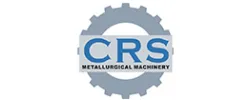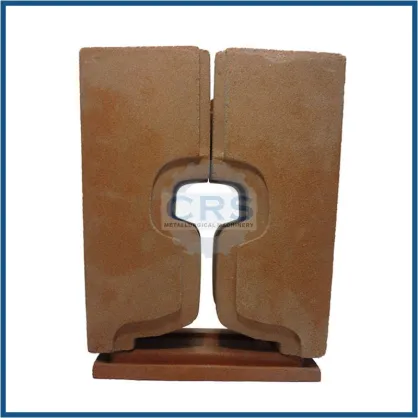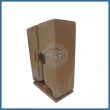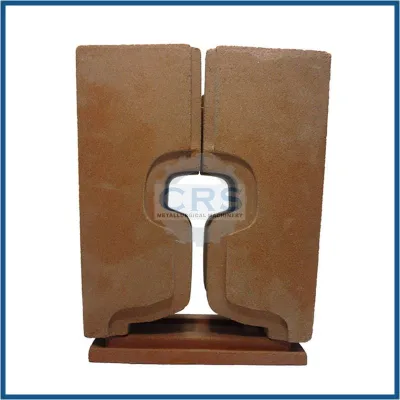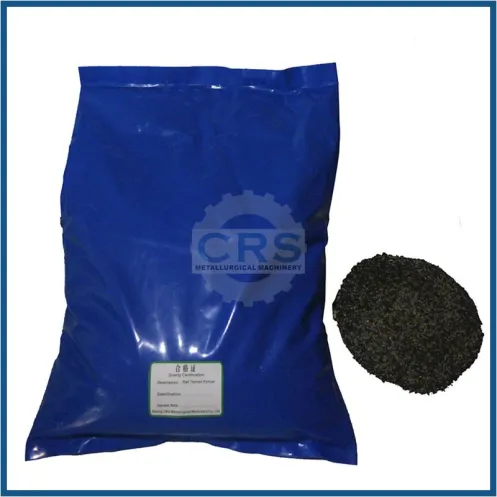Sand Mould for Thermit Welding
Thermite Welding Supplies: Sand Mould For Track, the primary material is SiO2(Silicon dioxide). It binds up the two ends of the rail and makes up an inner space to contain the liquid steel from the portion powder reaction.
The price list for any amount of Sand Mould is available within 12 hours!
3 pcs per pair
Rail type: 50KG, 60KG, UIC54, UIC60, QU100, QU120, Or custom-tailor
The main material is SiO2, it used to bind up the two ends of rail, make up a inner space to contain the liquid steel which from the portion powder reaction.
Sand Mould

Sand molds are used in thermit welding to form a cavity around the rail ends to be joined. The mold is made of sand and other materials and is designed to hold the molten metal produced during the thermit reaction. The sand mold plays a critical role in thermit welding, and its advantages include:
Provides a uniform cavity: The sand mold is designed to provide a uniform cavity around the rail ends to be joined, ensuring that the molten metal is distributed evenly.
Easy to handle: Sand molds are relatively easy to handle and can be easily formed around the rail ends to be joined, allowing for precise application and reducing the risk of spills.
High-temperature resistance: Sand molds are made of refractory materials, making them highly resistant to high temperatures of up to 2000°C.
Provides support: Sand molds provide support for the rail ends, ensuring that they are held in place during the welding process and preventing any movement that could affect the quality of the weld.
Can be reused: Sand molds can be reused several times, reducing the cost of welding materials and making them a cost-effective option for thermit welding.
Versatile: Sand molds can be used to weld different types of rail joints, making them a versatile option for thermit welding.
In conclusion, sand molds play a critical role in thermit welding by providing a uniform cavity around the rail ends to be joined, providing support, and ensuring that the molten metal is distributed evenly. The advantages of using sand molds in thermit welding include ease of handling, high-temperature resistance, reusability, versatility, and cost-effectiveness.
Thermit Welding Video
The main features of aluminum thermal welding of steel rails
1. simple equipment
2. filler welding, the use of flux reaction generated aluminum hot steel liquid filling the gap between the rails to be welded.
3. high smoothness of the joint
4. short operating time
5. welding occupies little space
6. welding construction occupies little time
7. No need to connect the power source
CRS Advantages
1. tensile strength of welded joints is 5%~18% higher than peers
2. Welding quality testing meets railroad requirements.
3. Three-piece die sand type can meet the welding requirements of rail cross-section, weld width, and the use of special processes
4. Price is 8%~25% lower than peers.
5. Free training, humanized service.
6. Free samples
Application areas
Steel rail aluminum heat welding flux is mainly used in railroad line maintenance, line overhaul, and new line construction.
Use scenarios: such as railroads, subways, factories' lifting rails, elevated railroads, city rails, etc.
Main export countries
Philippines, Vietnam, Thailand, Indonesia, Singapore, Malaysia, Myanmar, Laos, Cambodia, Sri Lanka, Korea, Russia, Turkey, Tajikistan, Pakistan, Bangladesh, etc.
Product Customization Service
China railway line, generally 50KG/m, 60KG/m rails, lifting rails QU120, QU100, QU80, QU70, the international use of more models are UIC60, UIC54.
According to the customer's rail type, we can make sand design and special customized rail type with a minimum order quantity of 300 sets.
Content that might be helpful to you!
What is thermite welding?
How is Thermite Welding performed on railroads?
View More
